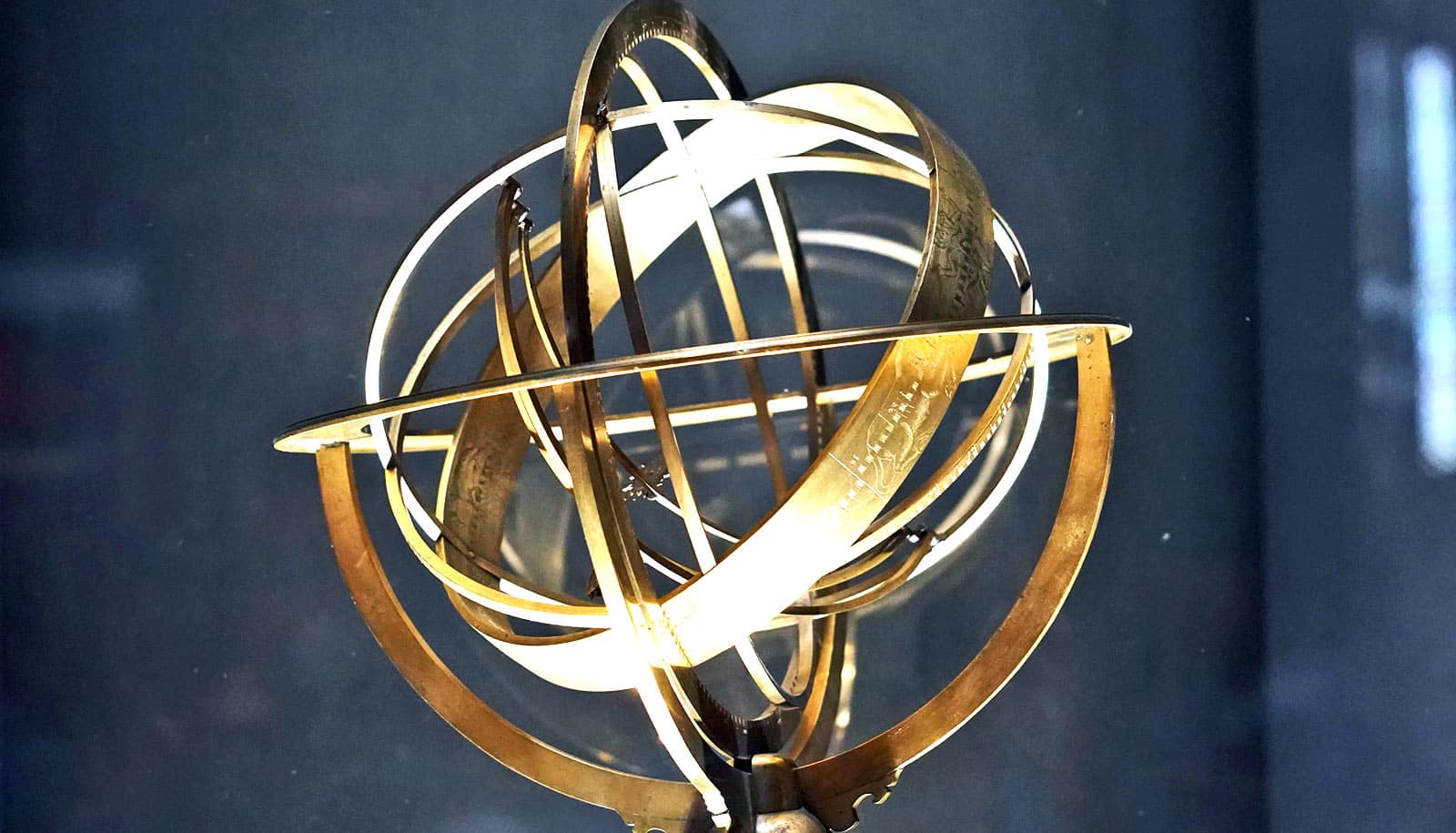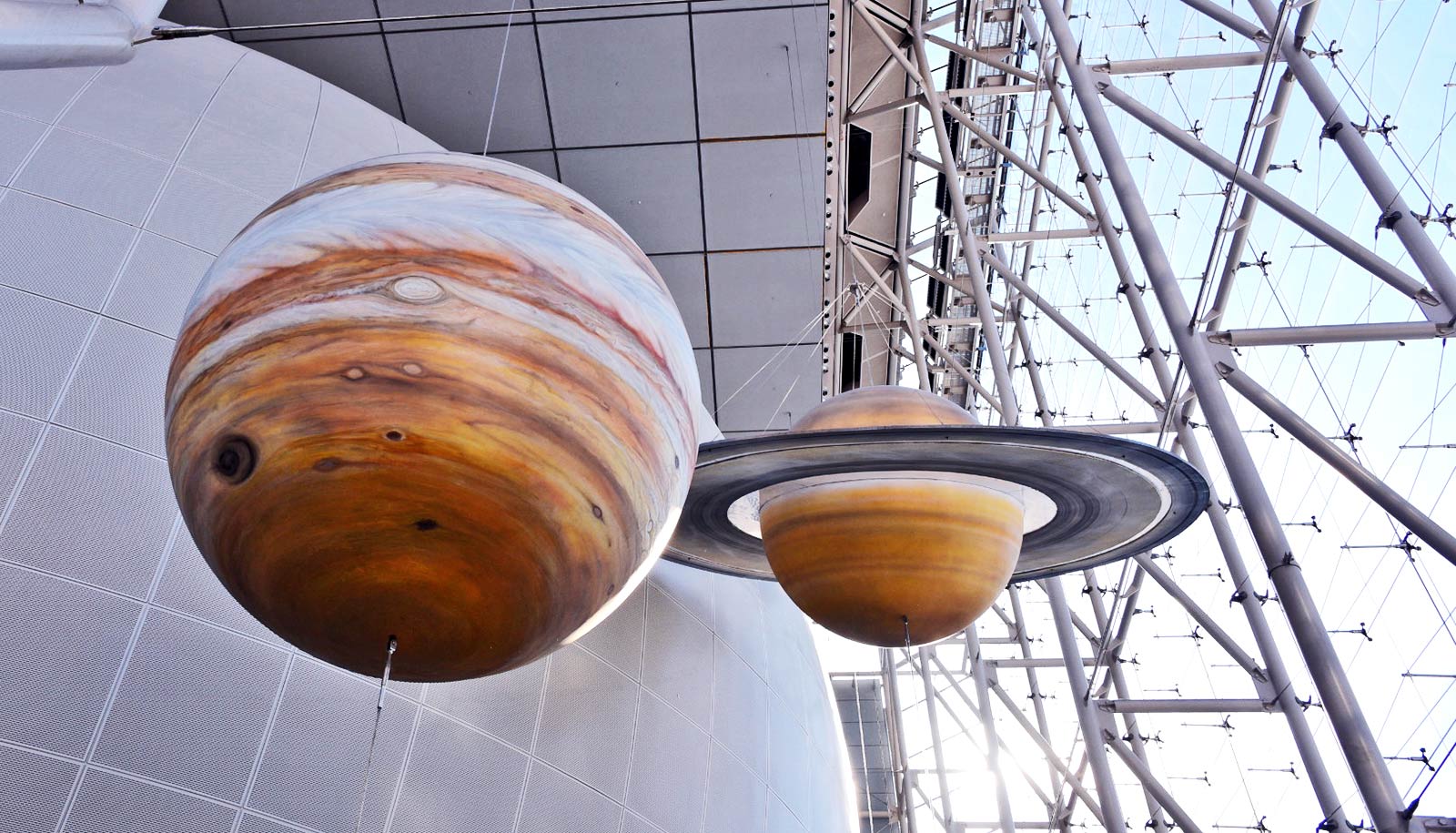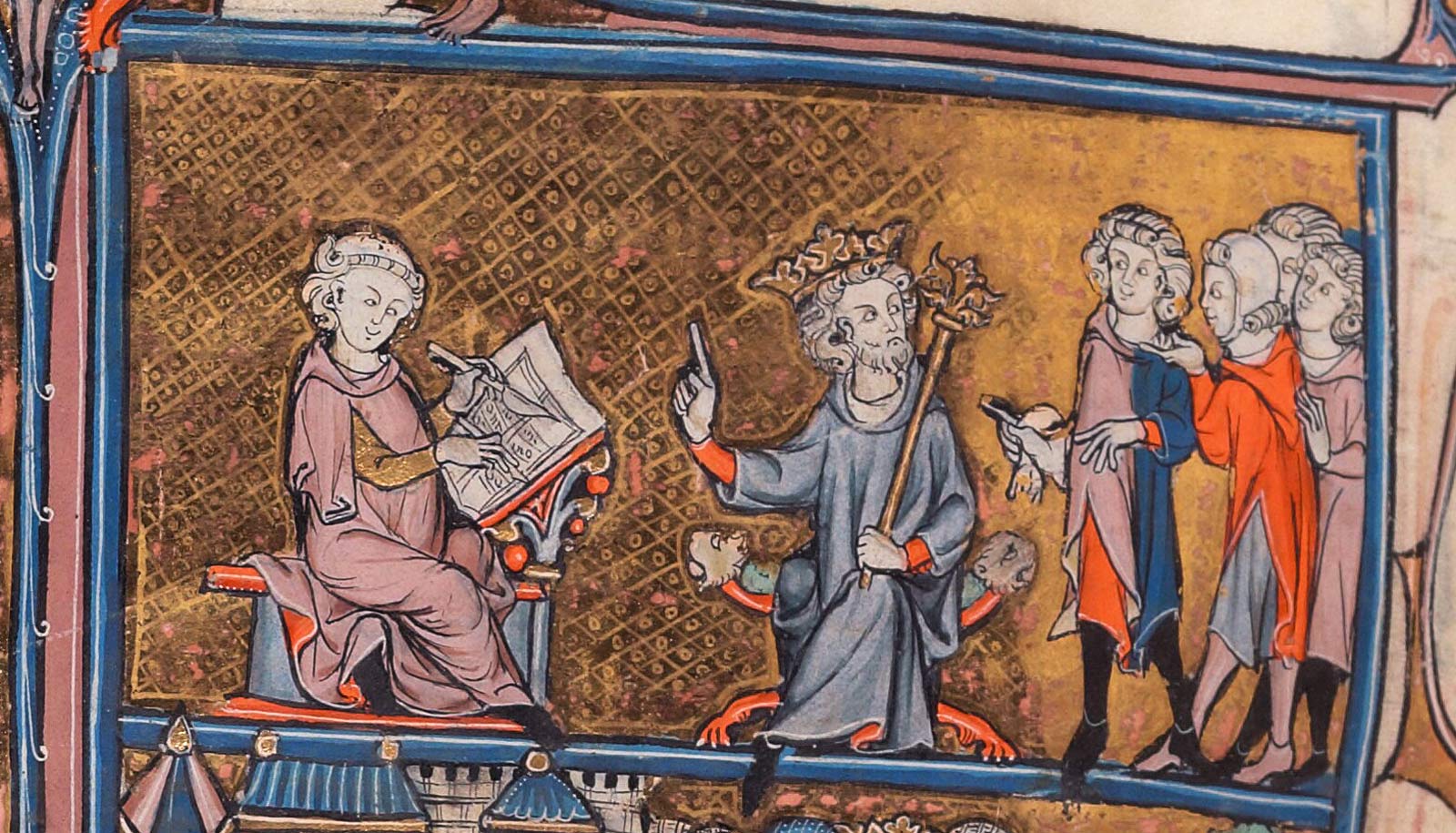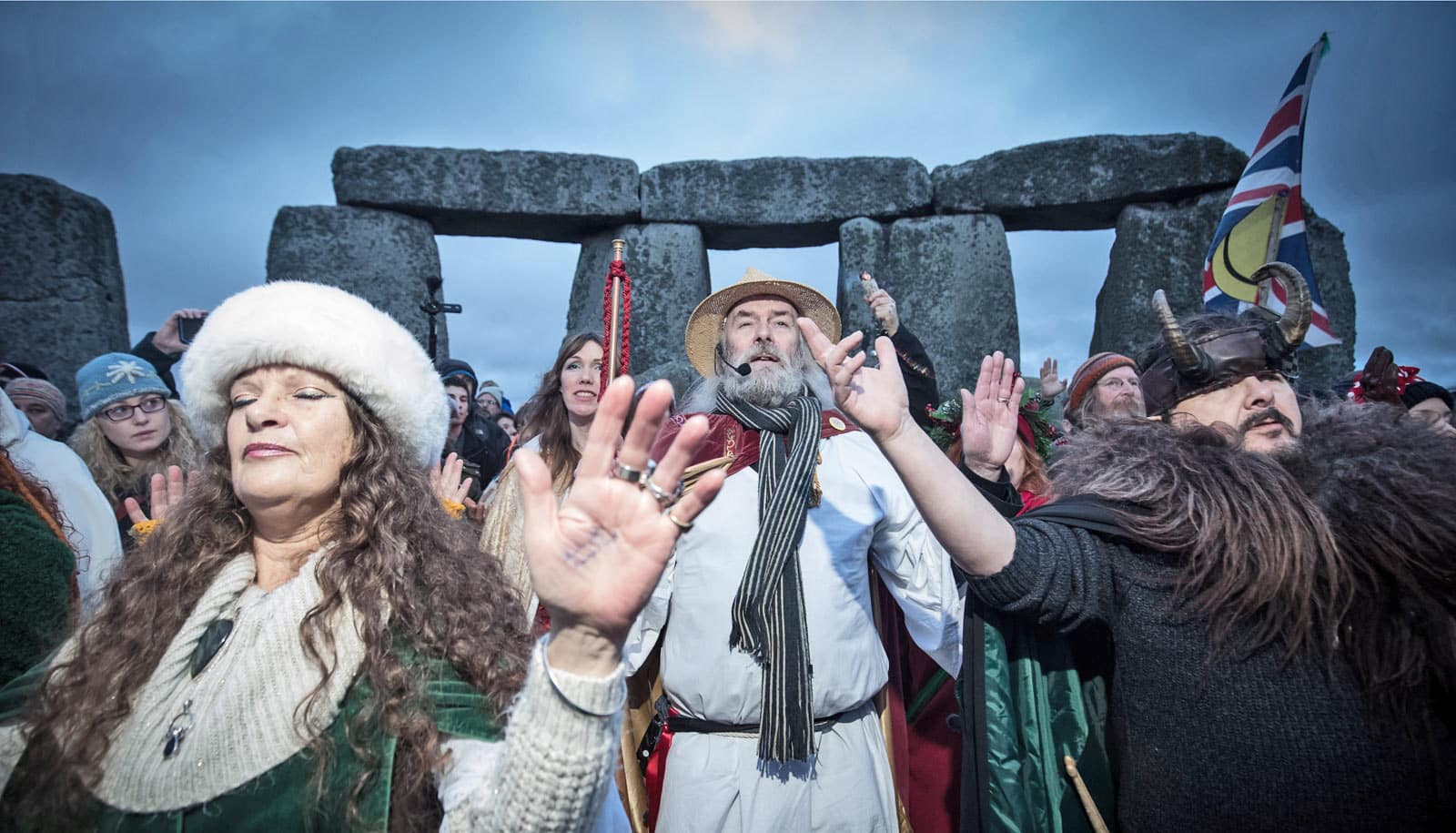Apocalyptic prophecies in the Middle Ages and Renaissance Europe often involved Saturn-Jupiter conjunctions, says historian Laura Ackerman Smoller.
Astronomers and amateur star gazers alike are training their telescopes on the evening sky for a heavenly spectacle when the conjunction of Jupiter and Saturn is more visible from Earth than it’s been in nearly 800 years.
The celestial event will play out on Monday—this year’s winter solstice—when our solar system’s two largest planets appear side by side above the horizon soon after sunset.
It’s been nearly eight centuries since the pair of planets appeared in conjunction this close to Earth. In 1623, a similar conjunction of the planets occurred, but on the same side of the sky as the sun, which meant it wasn’t visible from the Blue Planet. Monday’s conjunction will be the first visible occurrence since before the time of Marco Polo.
In the distant past, Europeans saw such alignments of the planets as signs of things to come, from famines, earthquakes, and floods, to the birth of Christ and the ultimate collapse of civilization.
“Of course, predictions about individuals were dicier than large general predictions. That’s why, during the Middle Ages and the Renaissance, Saturn-Jupiter conjunctions were frequently grafted onto apocalyptic prophecies,” says Smoller, a professor of history and chair of the history department at the University of Rochester.
The author of History, Prophecy, and the Stars: The Christian Astrology of Pierre d’Ailly, 1350-1420 (Princeton University Press, 1994), Smoller researches the intersection between magic, science, and religion in medieval and Renaissance Europe, centering around the two themes of astrology and apocalyptic prophecy, and saints and miracles.
Her second book, The Saint and the Chopped-Up Baby: The Cult of Vincent Ferrer in Medieval and Early Modern Europe (Cornell University Press, 2014), delves into the canonization and cult of the Valencian friar Vincent Ferrer, a fiery apocalyptic preacher who died in 1419 and was canonized in 1455.
For her current project, Smoller has returned to the stars—so to speak—where she’s tracing the relationship between astrology and prophecy for a third book, tentatively titled Astrology and the Sibyls—an investigation of ways of knowing the future ranging from around 1100 to around 1600.
Here, she explains what conjunctions meant to medieval and Renaissance Europe:
Why the great medieval obsession with Saturn-Jupiter conjunctions?
Saturn and Jupiter were the two outermost planets in the Ptolemaic system; other planets had not yet been discovered. They are also the two slowest moving ones. According to doctrines that medieval European astrologers learned from Arabic astrologers, whose works—translated into Latin in the twelfth century—formed the basis of medieval and Renaissance astrology, it’s when Saturn and Jupiter are found in the same area of the zodiac—in other words when they are in conjunction—that there are profound effects on Earth.
What made these conjunctions so special?
The two planets come into conjunction approximately every 20 years. Successive conjunctions form a roughly triangular pattern plotted against a diagram of the zodiac, meaning that three successive conjunctions will appear in the three zodiacal signs that form one of the trigons or triplicities—that is, the fiery signs, watery signs, earthy signs, or airy signs. Then, after approximately 12 conjunctions, the pattern will move into a new triplicity or trigon. This shift—which appears around every 240 years—was considered to be of great importance, bringing about changes in kingdoms, or in what medieval astrologers called “laws and sects”—that is, religions. After approximately 960 years, the pattern will return to the initial starting point in the zodiac, and this “greatest conjunction” was said to have the most important effects of all.
Isn’t the belief in both astrology and Christian religion a contradiction in itself?
Astrology posed a fundamental dilemma for medieval Christians: the notion that the heavens influenced the Earth below was unquestioned (after all, one simply had to see how the moon affected the tides), but the stars’ control of earthly events seemed to threaten human free will. If a person’s evil deeds were attributable to the stars, then how could God hold him or her accountable for sin? But medieval astrologers could also quote the Bible, saying “The heavens proclaim the glory of God”—Psalm 19:1) and saw the heavens as part of God’s Book of Nature, in which God had written signs of things to come. Astrology, medieval theologians and astrologers taught, was a science that God had revealed to the patriarchs.
Then how did theologians get around that conundrum?
That’s why predictions about general matters and about large crowds seemed safer. Theologians like Thomas Aquinas acknowledged that the stars can influence the body but not the soul, and that most human beings are swept along by their bodily passions. Hence, astrological predictions about large-scale events, such as wars, famines, changes in rulership, even large-scale religious changes were acceptable to medieval Christians.
In the late Middle Ages, even highly placed churchmen used these planetary conjunctions to predict the future of the Church. How so?
Pierre d’Ailly (1350-1420), a French cardinal who lived at the time of the Great Western Schism, when there were first two and then even three rival popes, worried like many contemporaries that the division in the church might signal the advent of Antichrist. But he also hoped that a church council could solve the Schism. In order to reassure himself—and his contemporaries—he turned to astrology and to the doctrine of the great conjunctions.
To that end, D’Ailly plotted great conjunctions throughout history, noting that they presaged important religious and political changes. For example, he pointed to a conjunction that predicted the birth of Christ and one that foretold the rise of Islam. And he was convinced that a Saturn-Jupiter conjunction, along with other key astrological phenomena, would precede the arrival of the Antichrist—which he predicted for the year 1789.
Sometimes historic events were even “fudged” to make these predictions come true?
Saturn-Jupiter conjunctions became an absolute mainstay of astrological predictions in the later Middle Ages and Renaissance, in part because it took very little astronomical expertise to add groups of 20 years to a known “root” conjunction. One of the more famous of such conjunctions is that which occurred in 1484. After the fact it was said to have predicted the career of Martin Luther, a seminal figure in the Reformation, whose birth date was adjusted to conform to the conjunction year.
Another example is the conjunction said to have predicted Noah’s Ark and the Flood. Although Pierre d’Ailly had originally posited that a greatest conjunction of Saturn and Jupiter had preceded the Flood by two years, he later had to acknowledge that most astrologers placed that conjunction at an awkward 279 years beforehand. On the bright side, however, his updated chronology allowed him to locate another greatest conjunction just five years and 320 days before the Nativity and Christ’s supposed birth.
Or, astrologers could always rely upon this handy piece of astrological doctrine: the less frequent the conjunction, the slower its effects would appear. That meant, in essence, that the effects of a “greatest conjunction” had 960 years in which to unfold, so that, in d’Ailly’s estimation, a conjunction in 36 BCE signified the birth of Muhammad, more than five centuries later. All it took was a bit of historic leeway and date fudging.
Source: University of Rochester



